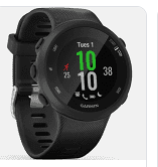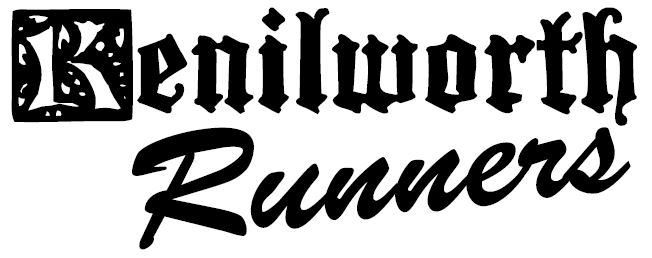
Coaching and Training Bulletin No.13
What and when to eat before running
At track last week I was amazed to hear what some people had eaten and when they had eaten before coming to the session. Personally, if I go for a very early morning run I drink a glass of water with some sports salts in and that’s it. Thinking about my breakfast to come when I get back keeps me going….
For a race or later morning run I have porridge, Weetabix or toast with jam 3 hours before.
What fuel (food) does your body need if you run?
It is important to know about the fuel your body requires. When working out the body uses it carbs and fats from food for fuel. Most easily broken down, carbs are our main source of energy. It is best therefore, to stick to low GI carbs that reduce energy slowly for a longer workout.
The body stores carbohydrate in small amounts in the liver and muscles, as glycogen; it is therefore important to make sure that the glycogen stores of the liver and muscles are optimal before exercise as they are depleted during training. The carbohydrate in your diet will provide most energy during exercise, mainly from starchy snacks that you eat before exercise.
General rules to stick to when choosing what to eat before a workout is most importantly to avoid high fat and overly fibre-filled foods. Though some foods like porridge, are high in fibre but don’t overload the stomach, they are great for providing a rich source of energy. Taking a good source of carbs and protein is always best for pre-workout meals.
Ideally before a workout it is best to have a meal around 3 or 4 hours before and if you really need to top up your nutrition then eat a banana an hour before.
Pre-workout examples — foods suitable for 3-4 hours before exercise:
- A baked potato with baked beans, cottage cheese, tuna or other topping.
- Rice with vegetables and lean meat; chicken or fish ideally.
- Pasta and sauce; pasta bake is ideal but with whole-wheat pasta and low fat sauce.
- Two slices of toast, peanut butter or cinnamon and a banana.
- Chicken or turkey sandwich on whole-wheat bread.
Pre-workout snack ideas — foods suitable for 2-3 hours before exercise:
- One slice of toast with any spread that take your fancy; peanut butter, jam, honey with banana.
- Greek yogurt with fruit and oats.
- Porridge or cereal, even better with a spoonful of peanut butter.
- A veggie or meat omelette, egg white alone or with yolk.
- A fruit smoothie.
- Hummus and whole grain toast or vegetables.
Best foods before a workout:
1 Bananas
As an easily digested carbohydrate, bananas are packed with energy and potassium, ideal to sustain your exercise and provide potassium easily lost through sweat. As a fast acting carb, bananas will provide an instant source of energy giving you an energy boost, and when combined with foods such a porridge and bread which release energy slowly, this makes the perfect combination for a long but intense workout. Ideally eaten around 30 minutes before a workout to utilise energy release, bananas are any athlete’s best friend for energy!
2 Wholegrain bread
Whole-grain breads are good carbs, having a low GI index, meaning that energy is released slowly into the blood to provide a more reliable source of energy, keeping you going for longer. Staying away from white bread, baguettes, bagels and so on is advised, but combining these breads with different foods such as eggs, peanut butter, chicken or any nutritious foods you fancy is beneficial way to provide a variety of nutrients used up when exercising.
3 Oats
Although overloading your food with stodgy, high fibre foods isn’t ideal, porridge offers an exception to this rule, relatively high in fibre, but not so much that it would cause gas or bloating if eaten relatively early before a workout. This fibre content can also assist the steady release of energy from carbohydrates, only furthermore assisted by the high vitamin B content. Combined with many nutritious and helpful foods such as almonds, bananas, peanut butter and so on, porridge is a great way to either start the day or serve as a mid-day snack, keeping you fuelled and energised.
4 Greek yogurt
Containing double the protein but only half the sugar than regular yogurt, greek yogurt is the ideal way to add a bit of protein and calcium before a workout, whilst satisfying any sweet cravings you may have. Protein is essential to ensure adequate muscle function, and taking in a good source of protein before a workout is ideal to keep your muscles fit and ensure efficient muscle repair after exercise. Although protein is generally very difficult to breakdown for fuel, instead combining it with oats, granola, fruits, honeys and so on, this will provide your body enough sugars and carbs to keep going for a long, intensive run.
Understanding about Heart Rate Zones
Most of you will have a running watch to record times, speed etc. Many of these watches will also record your heart rate (HR). Some of you may even use a chest strap heart rate recorder, but how many of you understand how you should be using this HR information to train?
There was a trend a few years back to use heart rate as a way of training rather than pace. This seems to have died out a bit probably because it was not as simple as speed. However, even if you don’t use your heart rate as a way of training you should be able to understand how heart rate relates to speed and at what level you should be training to gain the most benefit. In order to define how in general heart rate relates to how fast you run, heart rates are divided into 5 zones as follows: –
Threshold heart rate is the highest heart rate your heart would go up to during a fast race or track speed session. There is a formula for estimating this based on age but it is so inaccurate I will not even quote it now.
Zone 1: 60-70% of threshold heart rate: A very, very light intensity effort level marked by easy breathing and complete conversation. For many runners, this zone comes in the form of a fast walking pace as it is a very low intensity. Use it: for warm up and cool down, easy recovery workouts.
Zone 2: 70-80% of threshold heart rate: A light intensity effort level where you can still hold a conversation. Use it: for easy/recovery runs, warm up and cool down.
Zone 3: 80-90% of threshold heart rate: A moderate intensity effort level where you begin to hear your breathing, but you can still talk in sentences. Use it: long runs, training runs.
Zone 4: 90-100% of threshold heart rate: A comfortably hard intensity effort that is just outside your comfort zone where you can talk in one-word responses. Use it: for tempo runs and mile repeats to raise the lactate threshold (redline) and be able to run faster at easier effort levels
Zone 5: 100-110% of threshold heart rate: A hard intensity effort well outside your comfort zone where you can’t talk. Use it: for short interval workouts and the final finish of your race.
The aim is to match your training workouts to one of these zones to maximize every run and its benefits. When you do, you’ll notice your recovery dramatically improves, your performance improves, and you’ll have fewer aches and pains from pushing too hard.
To Summarise what Zones you should be training in: –
Zone 1 should be easy; a great intensity level for warm-ups and recovery days.
Zone 2 is meant for runs under 90 minutes duration; these longer, slower efforts serve as aerobic conditioning for distance runs. It’s also the zone that improves your body’s ability to use fat for energy (i.e. burn fat), which makes it good for weight loss. Runners training for a half marathon or longer should aim to spend up to 80 percent of your training in this zone.
Zone 3 is where your body gets the most cardiovascular benefit, and it’s sometimes referred to as the aerobic zone. When it comes to developing stamina and increasing aerobic capacity, zone three is the magic spot. Tempo runs, which are still predominantly aerobic, fall into zone 3, and generally last 30 to 45 minutes.
In Zone 4, you’re using more of a mix of aerobic and anaerobic metabolism. These threshold runs help your body gets better at using carbs for energy and learn to withstand higher levels of lactate in the blood. When it comes to boosting your performance and increasing your lactate threshold, training in zone four is a must. Reps of 800m and longer (or Fartlek session) on track or road.
Finally, Zone 5 is your high-intensity intervals that last under five minutes, you literally shouldn’t be able to continue for longer. Achieved in short 200m and 400m reps and the final sprint in a race only.
| The key is that you should be training in all of these zones at different times in order to maximize your performance. But note for half and full marathon Zone 2 should be 80% of your training. |
My challenge this week is to do a week’s running based on these recommended heart rate zones. If you cannot relate your typical run to a zone based on how you feel, then start looking at your recorded heart rate zone measured by your watch/strap as recorded on Strava. Below are my recorded heart rates last week (I have a max HR of 200): –
Run 1 Warm up just after going out ZONE 1
Run 2 Easy running on footpaths ZONE 2 -3
Run 3 Group run on Saturday ZONE 3
Run 4 – Fast mile within a longer run ZONE 4
So, to put this in context the following is a typical week of running you SHOULD be doing: –
Monday Rest
Tuesday 12k in Zone 2
Wednesday 10k (Tempo run) in Zone 3/4
Thursday 12k in Zone 2
Friday 8k (track or speed work) in Zone 4/5
Saturday 10k in Zone 2
Sunday 21k in Zone 2
If you run in Zone 3, 4 and 5 for all your runs, you may think you will run faster in races. This may be true if you are running up to 5k, but for the longer races 10k, half marathon, marathon, ultras etc you will not. You will be missing that all important aerobic conditioning you need most for longer runs. YOU WILL NOT GET THIS IF YOU RUN ALL YOUR TRAINING RUNS AS FAST AS YOU CAN.
Stay Safe, Stay Healthy.

